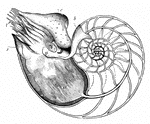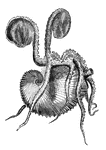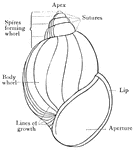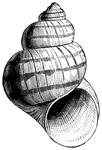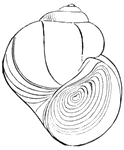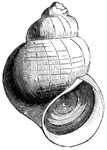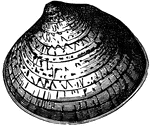
Cytherea Petechialis (Lamarck)
"Among the cast number of species belonging to the Veneridae family, many are extremely rare, and much…
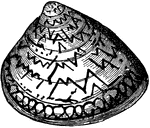
Cytherea Zonaria (Lamarck)
"Among the cast number of species belonging to the Veneridae family, many are extremely rare, and much…
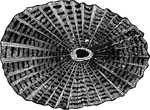
Greek fissurella
"The Greek Fissurella, F. Græca, is found in the Mediterranean and the Indian Ocean.…
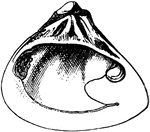
Right Valve of Galatea Bivalve
Galatea reclusa is a species of bivalve mollusk in the Donacidae family of bean clams (wedge shells).

The Heart and Arteries of a Snail
In high orders of Mollusca the circulation resembles that of fish. Shown is the heart and arteries of…

Helix Descrtorun
"Many species hibernate. The land-snails bury themselves in the ground, or conceal themselves under…
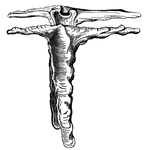
Malleus Alba (Lamarck)
"Only six actually living species of the genus have been found; these inhabit the Indian Ocean, the…
!["[From left to right:] Cockles, Imperial Volute, Clown Volute, Pholas, Helmet Shell" — Goodrich, 1859](https://etc.usf.edu/clipart/13900/13981/mollusca_13981_mth.gif)
Mollusca
"[From left to right:] Cockles, Imperial Volute, Clown Volute, Pholas, Helmet Shell" — Goodrich,…
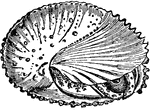
Mollusca
A sub-kingdom of animals embracing a division of the invertebrates. It includes especially those having…
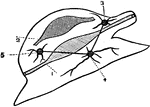
Diagram of a Mollusca
A diagram of a mollusca. Mollusca are soft-bodied animals that are usually protected by an external…

Diagram of a Type of Mollusca
In the Mollusca are found the ganglions and connective arrangement, with both sensitive and motor nerves,…
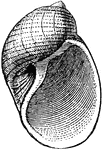
Naticoid
Naticina papilla is a species of naticoid, a predatory sea snail in the gastropod class of Mollusca.

Naticoid
Naticina haliotoides is a species of naticoid, a predatory sea snail in the gastropod class of Mollusca.
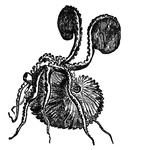
Paper Nautilus
The paper nautilus is closely related to the octopus. It creates its own thin shell, or egg case, in…

Paper Nautilus
The paper nautilus is closely related to the octopus. It creates its own thin shell, or egg case, in…
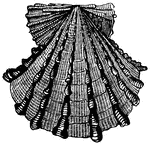
Pecten Foliaceus.
Smooth-shelled Pectens have colors that are frequently lively and brilliant. This is the Coral Pecten.
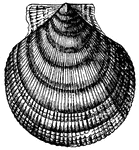
Pecten Islandicus (Chemnitz.)
Smooth-shelled Pectens have colors that are frequently lively and brilliant. This is the Northern Pecten.
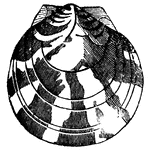
Pecten Pseudamussium (Chenu.)
"The Watered Pecten belongs to the scallop-shells. The shell is generally nearly circular, more or less…
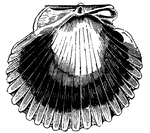
Pecten Purpuratus (Lamarck.)
Smooth-shelled Pectens have colors that are frequently lively and brilliant. This is the Purple Pecten.
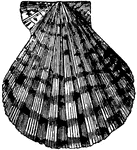
Pecten Tigris (Lamark.)
Smooth-shelled Pectens have colors that are frequently lively and brilliant. This is the Tiger Pecten.
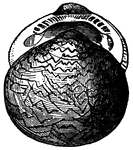
Pectunculus Scriptus (Lamarck)
"On the shores of the Mediterranean and along the Atlantic coast, species of the genus Pectunculus…
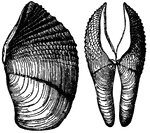
Pholas Crispata (Linnaeus)
This species is able to hollow out a home in a solid block of gneiss, one of the hardest rocks. To excavate…
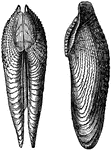
Pholas Dactylus (Linnaeus)
This species is able to hollow out a home in a solid block of gneiss, one of the hardest rocks. To excavate…
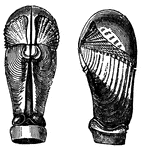
Pholas Melanoura (Sowerby)
This species is able to hollow out a home in a solid block of gneiss, one of the hardest rocks. To excavate…

Pholas Papyracea (Solander)
This species is able to hollow out a home in a solid block of gneiss, one of the hardest rocks. To excavate…

Pinna Bullata (Swainson)
"The genus Pinna was so called from its resemblance to the plumelet which the Roman soldiers…

Pinna Nigrina (Lamarck)
"The genus Pinna was so called from its resemblance to the plumelet which the Roman soldiers…

Pinna Nobilis, with its byssus (Linnaeus)
"The genus Pinna was so called from its resemblance to the plumelet which the Roman soldiers…

Pinna Rudis (Linnaeus)
"The genus Pinna was so called from its resemblance to the plumelet which the Roman soldiers…
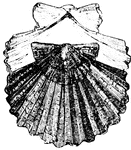
Scallop
Scallops are distinguished by the regular ribs of the shell, and by the two angular projections that…
Shuttle Shell
"A gastropod of the family Ovulidae and genus Radius, as R. volva, of long fusiform shape, the ends…
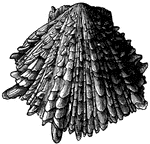
Spondylus Crassisquama (Lamarck.)
"The more remarkable species of the genus Spondylus; their valves are unequal."
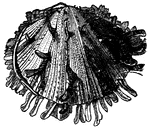
Spondylus Gaederopus (Lina.)
"The more remarkable species of the genus Spondylus; their valves are unequal."
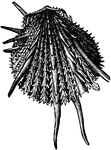
Spondylus Imperialis (Chemn.)
"The more remarkable species of the genus Spondylus; their valves are unequal."
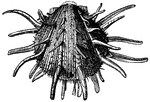
Spondylus Regius (Linn.)
"The more remarkable species of the genus Spondylus; their valves are unequal. A native of…

Atlantic Bobtail
The Atlantic Bobtail (Sepiola atlantica) is a cephalopod in the Sepiolidae family of bobtail squids.

Tridacna Squamosa (Inside) (Lamarck)
"The center is a bright violet, with brownish longitudinal, punctured lines. All these are inhabitants…

Tridacna Squamosa (Outside) (Lamarck)
"The center is a bright violet, with brownish longitudinal, punctured lines. All these are inhabitants…
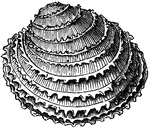
Venus Gnidia (Broderip)
"Among the cast number of species belonging to the Veneridae family, many are extremely rare, and much…
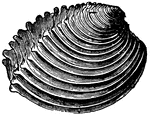
Venus Plicata (Gmel.)
"Among the cast number of species belonging to the Veneridae family, many are extremely rare, and much…
